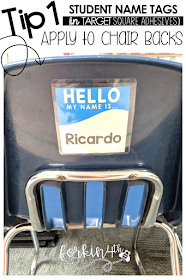
Like most Americans, I am incredibly thankful for the brave men and women who serve(d) our country. In fact, several men in my family are/were veterans (they served in the Army and sacrificed their lives to protect our freedom). At my middle school growing up, we had an annual tradition: hosting a Veterans Day assembly in which we invited neighborhood veterans, sang the national anthem and learned about their service. We even had a Veterans Day Poster Constest each November to help decorate for the event. I remember learning so much from my own research and feeling proud to see my poster hanging on the cafeteria walls!
Recently, I discovered the Library of Congress has a wonderful program called the Veterans History Project in which you are able to interview and document the experiences of your beloved member of the military. Not only that, but it is an excellent online source for your students to practice their research skills through their extensive catalogue of veteran profiles.
Each year at this time, I play the Veterans Day brainpop video clip during snack time, but that was about it. Was I really doing this day justice? NO WAY!! So, I created a meaningful computer lab activity (which can also be used as ELA center activity) perfect for Veterans Day. I took my time to find just the right archive of experiences on the Veterans History Project site, and have it bookmarked on my class website for students to access. Then, students can select any 3 veterans with photo images to research more about (eventually they choose just 1 to do the biography poster write-up for). If I need to narrow down the list a little bit more for my students, I'll tell them to focus on learning more about veterans with their same first initial or last initial.
The research note-taking sheet we use is pictured below.
I like to demonstrate one together as a whole class, so I can show them where I look to find information on the website. If the student would rather conduct a personal interview outside of school, they can use the same page. However, they'd just interview the family members/friends they're interested in finding out more about to document their military experiences. Afterwards, students will turn in this research sheet and indicate their top choices. I do this to make sure that:
- there won't be multiple posters of the same veteran
- (for me) so I can start prepping a PowerPoint document with photo images of their veteran. I'll size down the images (if needed) to make sure they fit on the final poster, and print them in color for the students to add to their Veterans Day projects!
With November being the shortest month of the school year (in my opinion), we normally share with a partner or among table groups, but there isn't typically enough time to share each veteran's story with the entire class. As a solution, I'll have students set their final posters on their desks and tour their classmates' work as part of a Veterans Day Gallery Walk.
If I feel extra competitive when assigning the project, I even announce there will be a Veteran biography poster contest for the neatest work. After completing the initial gallery walk, they'll go around with a small sticky note ripped in thirds (each with a sticky part). They get to award the 3 posters they believe to demonstrate the "BEST" quality work by placing their sticky on the top edge of the person's poster (it shouldn't cover their work for other classmates to see). THEY LOVE getting to DO THIS, but you have to make sure to let them know it's not so they can just put a sticky on their friend's poster, they have to be serious art critics!
Want this Veterans Day writing project to accompany research on the Veterans History Project in your classroom? Just, click the link below!












































